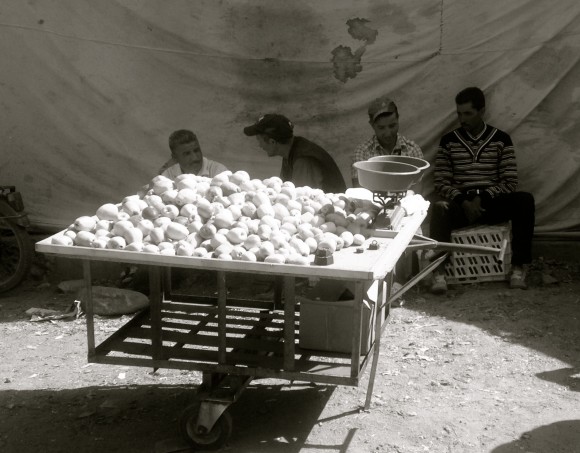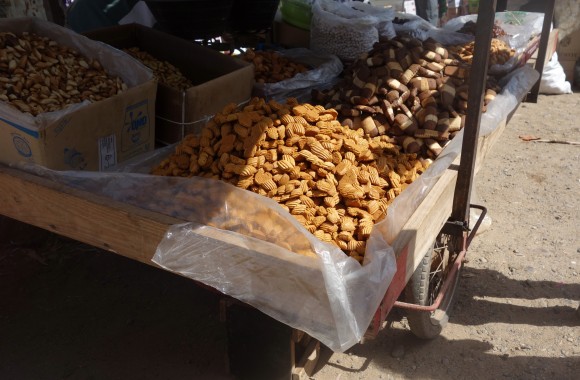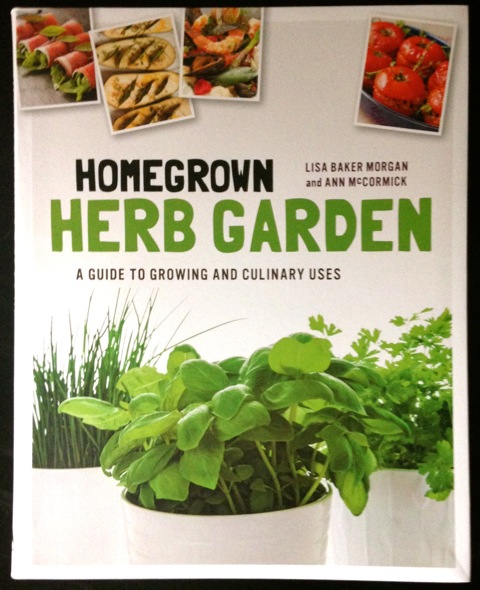
venez avec moi à Morocco
(part deux)
Happy summer!
In Paris we experienced a canicule, a heatwave, like I have never seen. It sent the Parisians to the country. For those that could not leave the city for the weekend, the mayor opened up additional parks where people gathered in droves under the shade of the green trees.
The triple-digit (Fahrenheit) weather reminded me of Morocco.
This post was intended to be part two of the photo journal I posted last autumn about Marrakech (with a recipe for Harira, a traditional Moroccan soup); however, the weather turned surprisingly cold and a grilling recipe, part two or not, seemed ridiculous. It is relevant now. Summer is here and the hot weather brings with it a desire to eat light and stay out of the kitchen. It is also grilling season.
So, here it is, Morocco, Part Deux, and a simple grilling recipe for skewered lamb chops with a spicy green Harissa.
Enjoy!
LM
In a country, much different than we had ever visited before, experiencing Morocco’s food and its food traditions was of the upmost of importance.
The old Medina in Marrakech felt touristy to me. It was. I wanted to see an authentic souk, not a souk modified by tourism. I wanted to experience a souk where the shopkeepers do not have pre-arranged deals with the tour guides and I was not pestered to buy souvenirs or pet someone’s monkey (it happened, see the first post). I wanted to experience a souk that tourists did not visit.
So, I channeled my inner Anthony Bourdain and found a guide to take us far outside Marrakech in search of a real souk.

We left the Red City, as Marrakech is commonly called, with its desert landscape and burgeoning modernization and after a few hours, we were surrounded by the Atlas mountains. The landscape was strips of red dirt, blue sky, and green pine trees. The colors, equally prominent. Equally vast.

This is where the Berbers live.
This is where I would find that souk.
My guide, part Berber himself, gave us the history of the area and told us about the Berbers.

The Berbers are decedents of pre-Arab inhabitants of North Africa. They were once identified as “Barbarians” because they spoke neither Greek nor Latin. When Morocco was a French colony (1912-1956), they became known as the Berbers.
It is simple living here. Electricity? Sometimes.
The Berbers live off of the land. They grow their own food. Some sell their handiworks, such are tajine pots and polished rocks, on the side of the road.

Free standing homes are scattered here and there but many Berbers live in troglodytes, traditional Berber homes built into the mountains as an integral part of the hardscape. A practice which Frank Gehry himself would appreciate.

Towns are an informal cluster of a few dwellings built around a questionably paved road. Bare-footed little ones and the family chickens roam free.

The ownership of vehicles is rare. Men ride side-saddle on mules or donkeys, hauling materials and supplies from one destination to another is commonplace. Berbers wait on the side of the road, sometimes for hours, for a truck, any truck, to take them to the souk. A driver picks them up, as many as he can, and takes his neighbors (and maybe an animal too) to the souk. It is a community. They help each other.

We found a spontaneous souk outside a little town. It was spontaneous because it was Sunday, not the usual day or time for a souk in this area, but it was set up to allow the villagers to obtain food to celebrate the conclusion of Ramadan.

It was unclear if Ramadan would end on Monday or Tuesday; it depended on the moon.

Tarps and burlap sacks covered the dirt upon which the fresh fruit and vegetables were placed.

Sellers sit upon the tarps with a scale to weigh the food. Large pieces of material or plastic were tied overhead to provide shade from the hot sun and it was HOT.

Live animals were as plentiful as the produce. The ownership of a cow, lamb, or goat are both prized and necessary for the Berbers. In addition to the practical value of using the animal for milk or food, a lamb is a necessity because a lamb is slaughtered by the first born male in each family every September.

Sounds of bleating sheep and animal hooves filled the souk. The transactions for the sale of the livestock was informal. Men shook hands and exchanged money or goods for the animal. The seller wished the purchaser well.

While the presentation and atmosphere are far different from anything you find in France or the United States, the selection of fresh food was largely the same except for the large quantities of cactus.

There was everything from fresh herbs and greens to stone fruit and summer squash. My guide explained that Morocco has a long and varied growing season and there is an particular area in Morocco well-suited for growing tropical fruits (explaining the quantities of pineapple and kiwi which took me by surprise).

Amidst the large containers of cooking oil, sacks of grain, and bleating lambs, there was a table upon which sat mounds of popped corn. Popcorn. In a pop-up souk in the the Atlas mountains.

There was only one thing missing at the souk. Women. The souk was all men. ALL MEN. Except for me. I suddenly understood why I was so popular. Why no women at the souk?
I was told that the souk is viewed as beneath women; it is work that only men should do. In truth, the souk was quite dirty, and rough. A double-standard born out of protectionism and respect, and in truth, I am not sure it was a place many women would want to be in any event, unless they had an innate curiosity about food in various cultures as I do.

As a tourist, I was not bound by the Ramadan fast, so I was able to eat the fruit I was offered. It was delicious.

We left the souk for something I equally anticipated, if not more: an Argan co-operative. But, I think that will be a story for another day because the experience deserves special attention.

In the afternoon, we had a picnic lunch in the Atlas mountains. It was a traditional Moroccan lunch with skewered meat kabobs and Moroccan vegetable salads to start.

The recipe this week was in spired by our day trip. I wanted to use both the cedar skewers as well as the Harissa I brought back from Morocco.

And, in honor of the bartered lambs, the pop-up souk, and our kabobs enjoyed in Berber land, I wrote a recipe for grilling skewered lamb chops and serving it with a spicy green Harissa.

Harissa is a spice common in Morocco which, when combined with garlic and olive oil, makes a Harissa paste. This version is green, adding fresh herbs and it goes with other grilled meats as well as couscous, rice, and starchy vegetables. The recipe will take you no more than 15 minutes to make and pairs well with a vegetable or green salad.

Wishing you all a delicious week.
LM

Tags: Berbers, grilling, harissa, lamb, Morocco, souk, travel







Leave a Reply